Read Part 1 on Combat Training. Part 2 on Firepower. Part 3 on Tactics and Doctrine. Read Part 4 on Technical Standards. Read Part 5 on Material Condition and Availability. Read Part 6 on Strategy and Operations.
By Dmitry Filipoff
Force Development
Exploring the future of conflict while preparing to wage it is a daunting task. Military forces are constantly attempting to perceive how war is evolving, and subsequently orienting their institutions along that vision in order to be ready. However, what makes a military unique from most other organizations is that it does not execute its primary function (aside from deterrence) until war breaks out. This makes it especially difficult to prepare for major war since it is a rare experience that usually cannot be fully understood until it finally occurs. When war arrives, years of preparation are immediately put to the test, and deficiencies are violently revealed. How well a military has prepared for conflict in peace helps determine how much it will have to adjust in war. In this sense, force development is the peacetime equivalent of wartime adaptation.
The term force development has been used here in place of a term that is often used to describe military evolution, “modernization,” which tends to have an inherent bias toward high-end capability and not full-spectrum competence. The idea of “modernizing” implies a focus on pushing for better technology, yet “modernization” 20 years ago could have meant preparing for low-end conflicts where technological superiority conferred little advantage. The term “modernization” can also encourage a habit of using the procurement of newer systems as a major milestone for progress, and promote the fallacy that once new technology is bought and fielded a shortfall has been filled or an advantage has been gained. What has to be recognized is that once the taxpayer has purchased new military tools the warfighter has an obligation to execute follow-through in the form of developing new tactics and training around those tools. Otherwise, the benefits or pitfalls of new technology will not be fully realized.
Force development as it has been described here intends to convey that the institutions that focus on tactics and doctrine, not procurement, are what primarily drive competitive military advantage. It intends to convey that operator understanding of how to execute and evolve tactics and doctrine is how to best define warfighter competence. Tactics and doctrine must not only be well-understood by the warfighter, they must be thoroughly validated so that they actually make sense in application. The professionalism of the force will punch far below its weight if warfighters are well-versed in warfighting concepts that turn out to be brittle.
Force development still occurs even in the middle of war, but it takes on a far more urgent character. Militaries are often forced to innovate and experiment in the middle of conflict, and spend precious time and resources on force development when those resources could be applied to the battlefield. However, even in the middle of a war (or especially so) militaries often choose to make those considerable investments because wartime adaptation can be decisive. Wartime force development can seek to correct deficiencies revealed by combat experience, rapidly field new capabilities built on fresh tactical insight, or remain ahead of the curve in a general sense as all sides continually pursue better tactics. If a force can enter a conflict with sturdier warfighting concepts then it can focus more of its wartime force development on proactive evolution instead of painful corrective action.
An example of failed peacetime force development and a subsequent effort to urgently correct deficiencies in the middle of war can be found in the U.S. submarine force. The submarine force entered WWII with ill-conceived concepts of operation, a highly risk-averse culture, faulty weapons, and underdeveloped tactics. Submariners at first expected to mostly use sonar to attack their targets (a dubious tactic at the time), were equipped with torpedoes that often failed to detonate upon impact, and had little doctrine for unrestricted anti-submarine warfare. These deficiencies forced American submariners to experiment with new tactics and doctrine in the midst of conflict.1 This force development failure happened in spite of the interwar period wargames, Fleet Problem exercises, and Admirals King and Nimitz both having a decent amount of submarine experience. U.S. naval commanders even had the especially useful experience of watching German U-Boats earn combat experience as they sunk hundreds of merchant ships in the Atlantic before America entered the war. However, as a result of poor force development, U.S. submarines punched far below their weight for many months while the rest of the force still relied heavily on them to take the fight to enemy home waters.
The U.S. military suffered a historically painful force development experience in recent years. Despite after crushing the initial opposition in the opening phases, the wars in Iraq and Afghanistan began to falter hard as insurgents made impressive gains in territory and manpower. The counterinsurgent fight proved to be extremely difficult in these countries due to the complexity of interagency operations, unfamiliar frontline roles, war-torn societies, and a host of many other significant challenges. But as the Department of Defense sought to adapt itself to a difficult fight it at least had the benefit of history. Insurgency is perhaps the most common form of warfare, with around 100 such conflicts in the past century.2 There was no shortage of case studies to learn from.
The Navy’s current situation couldn’t be more opposite. High-end fleet combat between great powers using precision weapons has never happened before. This is why realistic exercising for the sake of experimentation and investigation is so important. Because there are zero historical examples to draw on, the Navy must dedicate an especially large effort toward building its own case studies of networked fleet combat actions in the form of unconstrained, large-scale exercises. However, the Navy’s long tradition of highly unrealistic exercising translates into very poor institutional understanding on many specifics of future combat.
The Navy’s chronic lack of realistic exercising and its bloated certification system reveal a force development enterprise in disarray. The Navy has many institutions that produce tactical memoranda, concepts of operation, and doctrine, all of which seek to evolve the force. Yet many of these ideas have not been effectively validated because exercises were not used to meaningfully test ideas in realistic environments. The few tactical and doctrinal ideas that did have the opportunity of being tested in large-scale exercises were likely pitted against handicapped opposition forces. This undercuts the process tremendously. Scripted exercises that guarantee easy victory are far more likely to produce brittle tactics and doctrine. These concepts will rarely experience multiple rounds of revision and refinement born from a series of iterative exercises. Clearly there will be many rounds of trial and error if one is testing warfighting ideas against capable opposition. As a result of using weak opposition to validate warfighting concepts many of the Navy’s most important wargames, tactical memoranda, concepts of operation, and doctrine never left the level of a rough draft.
Even if it was effectively validating concepts through realistic exercises, the Navy’s ability to teach the average Sailor new tactical lessons is severely handicapped. Warfighting certifications are supposed to institutionalize the Navy’s force development, but the bloated character of the certification system is strangling the Navy’s ability to become a learning organization. Tactical and doctrinal products cannot turn into meaningful learning if they take the form of just another certification event or inspection Sailors have to check off among the dozens if not hundreds of other events. Many Sailors already feel it is virtually impossible for them to get good at the numerous certifications that have been forced upon them. Because of this, institutions that work on producing tactics and doctrine are having many of their efforts effectively wasted because their products simply cannot compete for time within the certification system. And even if the Navy somehow made enough time for Sailors to effectively study tactical and doctrinal publications, they are being given little opportunity to use meaningful exercises to distill those lengthy publications into actionable and digestible insights. The scarcity of meaningful exercising and the bloated certification system have combined to produce numerous warfighting ideas that are untested, unrefined, and untaught.
Under these conditions, the U.S. Navy is hard-pressed to define requirements that can remain durable in great power war. There should be absolutely no doubt that an incredible number of latent problems have been accumulated over the years as a result of lax force development and using weak opposition to validate concepts. If the Navy decides to embark on a serious path of transformation for the high-end fight then it must steel itself for difficult corrective actions, stubborn bureaucratic pushback, and the possibility that it may be stuck with tactically disadvantageous investments that could prove fatal in war.
Wargaming
Soon after leaving his term as the first president of the Naval War College he founded, Stephen B. Luce grew frustrated. Just before opening the War College, Luce commanded the North Atlantic Squadron, a unit he used to test warfighting concepts through at-sea experimentation and exercises. After finishing his term at the War College, Luce came back to the Squadron, hoping to conduct more exercising in pursuit of new tactics. Others had something else in mind.
After rejoining the Squadron, Luce’s attention was almost immediately diverted by higher ups. He was ordered to handle brewing fishing disputes that consumed much of his attention for the first year of his command. Unrest in Haiti prompted the Navy to detach one of his ships to the Caribbean. A request from the State Department took another ship. Not long after Luce’s flagship was also stripped from his command to serve elsewhere, the Navy Department inquired about his summer training plans.
Luce had finally had enough. With only two ships remaining under his command Luce fired off a stern letter to Secretary of the Navy William Whitney, and described how a fundamental mission of the Naval War College was being undermined:
“The fundamental idea (emphasis added) is to make theoretical instruction and practical exercise go hand in hand; or, in other words, to correlate the work of the Squadron and that of the College. In the lecture room certain tactical propositions are laid down, or war problems given out, to the officers under instruction. Their merit is then tested in the School of Application, the Squadron, and the result afterwards discussed in the lecture room. This system raises our Squadron exercises to a higher plane than those of any other known to me, and places our Navy, comparatively insignificant in all else, in advance of the Navies of the world in respect to professional education.”3
Today, the Naval War College stands as one of the most important institutions to the Navy’s force development. Aside from educating cohorts, the College performs critical force development functions for the Navy by playing a leading role in its wargaming enterprise. These wargames seek to answer some of the most critical questions of strategy and future development. They can inform war plans, test contingencies, and support major programmatic decisions such as future warship procurement. They can explore new tactics, doctrine, and warfighting concepts. However, the problem that afflicted Luce’s squadron also holds true today. The Navy has allowed operational demand to strip units away from its wargaming enterprise, and no serious effort has been made for decades to “correlate the work of the Squadron and that of the College.”
The Navy continues to use wargaming to make major decisions and provide important insights. However, the validity of wargaming is being diminished by both the rising complexity of networked warfighting and a lack of real-world testing. The Navy is heavily leaning on a tool that is growing ever more dependent on real-world testing for the sake of accuracy, yet the Navy’s exercise agenda appears to rarely reflect major wargaming initiatives.
Wargames, because they are virtual simulations of conflict, operate on a far wider spectrum of tactical assumptions than real-world exercises. Attempting to recreate tactical accuracy in wargames stretches them to their limits and takes considerable effort. High-fidelity wargames can be extremely intricate programs, requiring meticulous inputs, powerful processing capabilities, and are governed by many rules. Elements of chance can be introduced through randomized results, similar to a dice roll.
Exercises and wargames must work together when exploring tactics and doctrine. Wargames can play out many scenarios in a preliminary manner to narrow down options and ideas. What remains can then be played out in the real world using exercises. In addition to testing out the ideas themselves, exercises can uncover assumptions and collect important technical data that can update the models the wargames operate on. This point was elaborated on by renowned wargamer Peter Perla:
“Careful observation, reconstruction, analysis, and interpretation of exercise events and system and unit performance can provide the insights and data to improve the form of mathematical models and the quality of parameter estimates. In addition, the physical execution of maneuvers and procedures required to carry out the operation can help to identify important operational opportunities or potential problems that the analysis and wargaming may have downplayed or failed to consider at all.”4
As powerful and complex wargames are, they are still only simulations, and cannot come close to the realism of exercises. Exercises have to be used to refine wargames in a continual feedback loop for the sake of refinement, and to keep wargames grounded in reality. Many types of wargames are not supposed to be static, but fluid simulations that are continuously updated through exercises to improve their realism and ensure their accuracy. Significant tactical discoveries should also be enough to prompt the replaying of certain wargames. Exercises can help wargamers more precisely understand the very things that make a wargame artificial, such as factors that must be reduced to dice rolls, inputs, and rules. In short, exercises help wargamers understand their assumptions.
The complexity of Information Age warfighting is one of the most powerful forces diminishing the value of tactical- and operational-level wargaming. As warfare becomes more complex, it becomes more difficult to simulate. This holds true for both exercises and wargames, but it is especially more true for the latter given they are simulations and not real maneuvers. The world of inputs required to accurately simulate warfare has grown to unprecedented heights, especially because so much decisive tactical space now exists within electronic means that are especially difficult to replicate in a simulation.
Networked warfare involves many complex and nuanced electronic interactions between opposing forces. The nature of sensing, deciding, and engaging has become an ambiguous electronic battlefield. Opposing sides will seek to jam, intercept, and deceive communications and sensors across the spectrum. Cyber attacks will seek to cripple systems, collect sensitive information, and proliferate throughout infrastructure. As an anti-ship missile closes in, its seeker can use a variety of sensors to pinpoint its target, and a variety of countermeasures such as electronic warfare will respond in an attempt to confuse the seeker. Bandwidth limitations will shape decision-making, and data will be processed and refined by both man and machine. Operators and autonomous actors will attempt a variety of real-time workarounds in response to electronic attack, and these attacks can cause them to lose confidence in their equipment and each other.
It is already extremely difficult to replicate many of these network combat dynamics in exercises, and for wargames many elements are outright impossible. While a wargamer can make due by using dice rolls to distill combat ambiguity into specific outcomes, this will not often satisfy the tactician or the trainer. Even the supposed strengths of wargaming are challenged by networked warfare. According to Perla, wargaming “is a tool for exploring the effects of human interpretation of information. Wargames focus on the decisions players make, how and why they are made, and the effects that they have…The true value of wargaming lies in its unique ability to illuminate the effect of the human factor in warfare.”5 Yet so much decision-making in modern war is completely beholden to electronic nuances that wargames struggle to replicate, and decision-making is often the direct objective of electronic attack.
Because networked warfare poses immense realism challenges to wargaming, a force development strategy in the modern era demands an especially exercise-heavy process of tactical investigation. Wargames have become more dependent than ever on exercises because exercises can probe whether decisive tactical truth lies undiscovered within the seams of simulation.
Exercises are indispensable to wargames because they can provide the important baseline input of the competence of the force. Even though it can be difficult to program human performance factors into a simulation, these are some of the most important variables to know for the sake of realism. By benchmarking human performance through exercises, wargames can have a realistic baseline of how well the force can perform and then build ideas within the limits of that potential. Otherwise, wargames will be misaligned with the training of the force, and can run the grave risk of producing tactics, doctrine, and war plans that are beyond the ability of the force to execute. To paraphrase a certain quote, you go to war with the fleet you trained, not the one you wargamed.
Force Structure
Soon after guiding at-sea experiments to test future warship concepts, Wayne Hughes became frustrated. The USS Guam had been modified to test concepts for the Sea Control Ship (SCS), a warship concept touted by then-Chief of Naval Operations Admiral Zumwalt who desired a large platform dedicated to anti-submarine warfare. However, according to Hughes, the tests were hamstrung by a lack of imagination and poor understanding of how to use exercises to make a warship concept come alive:
“It was my task to design an experiment from which as much information as possible could be gleaned during ten days of intensive interactions between submarines, their target (played by the Guam), and the assorted screening units…SCS success depended on new tactics (emphasis added), which we didn’t have, and the tactical commander’s staff lacked enthusiasm to develop. I had frustrating conversations with the admiral, who thought his responsibility began and ended by rigidly following the test plan…An exercise at sea is as much for tactical development and training as it is for statistical testing. Most new weapons, sensors, and command-and-control systems entail new tactics to reach their full potential.”6
This experience points to a fundamental principle of designing military forces: force structure is founded on tactics.
How a fleet will be used in war is fundamental to its design, and the shape of force structure is guided by a perception of what capabilities and tactics will dominate. When it appeared advantageous to use aircraft to attack ships, nations built aircraft carriers. When a torpedo fired from an undersea platform could produce a powerful combination of surprise and lethality, nations built more submarines. When aerial threats took the form of missile salvos the U.S. Navy led the way in building warships focused on long-range air defense. When platforms were deemed to have lost their tactical relevance, whether ships of sail, ironclads, or big-gun battleships, nations stopped making them.
Three congressionally mandated force structure studies set out to understand what the future fleet could look like, and examined various considerations such as cost, forward presence models, and national strategies. However, while a force structure assessment can be shaped by many factors, the assessment is inherently incomplete if it does not attempt to understand how future tactics and doctrine will define the composition of forces. While the studies took various analytical approaches, the assessment conducted by the Center for Strategic and Budgetary Studies stands out in this regard. 7 It devoted extensive attention to trying to understand the character of future conflict, how capability development is trending across numerous warfare areas, and what new operating concepts may require. All of the studies acknowledged to some extent that visions of tactics and operating concepts are fundamental to designing force structure.
The existence of a platform or payload is solely justified by the tactical options and advantages it offers. The structure of a fleet is therefore the embodiment of concepts of operations that are built on tactics that are meant to work well together. However, the extent to which those warfighting concepts are proven or not is another question. Aligning force structure planning with an ever-evolving vision of future war is a major strategic challenge, and goes to the very core of force development. This point was made clear by maritime strategist Julian Corbett:
“The truth is, that the classes of ships which constitute a fleet are, or ought to be, the expression in material of the strategical and tactical ideas that prevail at any given time…It may also be said more broadly that they have varied with the theory of war…It is true that few ages have formulated a theory of war, or even been clearly aware of its influence; but nevertheless such theories have always existed, and even in their most nebulous and intangible shapes seem to have exerted an ascertainable influence on the constitution of fleets.”8
Those who favored battleships in the interwar period did not accurately predict their fate because their “theory of war” had failed to keep pace with change. They had a flawed understanding of how future war at sea would develop at the tactical level, especially with respect to how the air domain could dominate the surface domain. The American capital ships that were long expected to be the dominant offensive platform for anti-surface warfare instead spent most of their fleet combat actions serving as ships focused on the defensive anti-air mission. New tactical truth led to battleships being modified in the middle of the war to carry additional anti-air weapons and bolster their defensive firepower. However, their enormous guns, the core weapons that originally justified their construction, were totally irrelevant in this new role. If the interwar Navy had accurately predicted the tactical fate of the battleship would it have built them differently? Would it have built them at all?
For all the good the interwar period wargames and Fleet Problem exercises did for the Navy’s force development they often made one major mistake – scripting battles to guarantee a clash between the battleline.9 The potential of the aircraft carrier was rapidly growing, but in the minds of many interwar leaders the fleet combat actions of the era would still frequently feature fights between battleships. Interwar period exercises and wargames were artificially fulfilling this warfighting theory, thereby lending weight to programmatic decisions to procure battleships. It is quite possible that if not for the revealing combat experiences of WWII then navies would have continued building big-gun warships.
Modular force structure can act as an insurance policy against the sort of tactical irrelevance that befell the battleship. Modularity helps ease both peacetime force development and wartime adaptation. A “payloads not platforms” approach can help a force compensate for poorly-adjusted warship designs once conflict reveals hard lessons. Deep magazines and the large variety of missile payloads could allow a modern ship to change its mix of capabilities in far less time than it took a battleship to undergo a refit.
However, net-centric warfare has made adapting modern warships more difficult in certain respects, even with modularity. A key challenge will be in trying to ascertain how tactical outcomes heavily influenced by ambiguous electronic effects will translate into an ideal mix of capabilities. If defensive electronic warfare or jamming proves to be especially capable at defeating missile seekers then an adaptation could take the form of equipping a different missile loadout. Missile loadouts could also be affected by how well datalinks and network nodes can concentrate fires while being degraded by electronic attack. If the network is less resilient than anticipated, then a new missile loadout could focus on making a warship more independent from forces it would have originally relied on for networked fires.
An enduring principle of successful warfighting is optimizing the concentration of firepower. This principle has especially dominated naval force structure, and can be seen in how successive capital ship designs often grew larger and larger to concentrate more firepower. Preferable ways to concentrate firepower through force-wide tactics can also translate into how a fleet is built. Ships of various sizes offer different levels and types of firepower, and the way tactics affect concentration can translate into an ideal mix of platforms. Interwar period navies did not build fleets of only the most powerful platforms in the form of battleships or carriers even though large-scale fleet combat featured prominently in their minds. Rather, their fleets struck a balance between large capital ships and many smaller combatants such as cruisers and destroyers. They felt that their visions of fleet combat created relationships between tactics and concentration that encouraged a degree of platform variety.
Optimizing platform variety has become far more difficult in the age of networked warfare because assumptions about network performance can have a powerful effect on designing force structure. Network resilience will strongly dictate the extent to which capabilities can be effectively distributed and concentrated in combat, but the distribution and concentration of capability is also exactly what force structure seeks to optimize. A fleet that is built on a vision of a well-functioning network could very well have a vastly different composition compared to a fleet that anticipates fighting mostly in the dark.
To use a modern example, a U.S. Navy cruiser has 122 launch cells and a possible version of the Navy’s future FFG(X) frigate could have 16 launch cells. Would the Navy be better served by buying 20 frigates or 10 cruisers, where the cruiser could cost twice as much as the frigate but has seven times the missile capacity? A well-grounded understanding of how retargeting and engage-on-remote tactics shape a distributed force’s ability to mass firepower should inform such a debate.
Today the Navy finds itself at a critical inflection point in building the future fleet. It is currently finalizing designs and requirements for the next generation of surface warships in the form of a future frigate FFG(X), and a family of future surface combatants (FSC). The FFG(X) frigate and FSC warships are expected to serve well into the latter half of the 21st century. The request for proposals for the FFG(X) frigate offers interesting concepts of operation for how the Navy intends to use the platform:
“This platform will employ unmanned systems to penetrate and dwell in contested environments, operating at greater risk to gain sensor and weapons advantages over the adversary. The FFG(X) will be capable of establishing a local sensor network using passive onboard sensors, embarked aircraft and elevated/tethered systems and unmanned vehicles to gather information and then act as a gateway to the fleet tactical grid using resilient communications systems and networks…In terms of the Navy’s Distributed Maritime Operations (DMO) Concept, this FFG(X) small surface combatant will expand blue force sensor and weapon influence to provide increased information to the overall fleet tactical picture while challenging adversary ISR&T efforts.”10
This is a preview of future tactics and missions, but it hints at a major force development challenge. Requirements for these ships have to try to align with major transformations the Navy has planned. The Distributed Maritime Operations Concept is still in its early stages. The Distributed Lethality concept envisions numerous surface action groups that combine various types of ships into tailored force packages. Networked warfighting can feature various multi-domain tactics and distributed fleet formations, each with a different ability to concentrate firepower and facilitate command and control. Tactics for key capabilities like NIFC-CA, CEC, retargeting, and engage-on-remote will be the bread and butter of networked warfighting. An unprecedented increase in long-range anti-ship firepower is about to hit the Navy as a new generation of anti-ship missiles is fielded.
In short, these future ships must somehow reflect the implications of many net-centric tactics and roles the Navy has yet to develop or discover.
The Navy is heavily relying on simulations such as wargames and tabletop exercises to test concepts of operations for these future ships. According to Navy officials, the FSC program was “preparing for a big wargame…to test out ideas for the FSC family of systems” and that “Based on the outcome of the June wargame, officials should have a ‘surface force initial capabilities document’ written by July to get FSC into the acquisition pipeline.” One Navy official emphasized, “We’ve got to get these wargames right…”11
The Navy’s void of high-end experience is now a critical foundation upon which it is deciding its future. The Navy is led by officers who spent most of their careers in a fleet that failed to train them in sea control, abstained from equipping them with essential weapons like anti-ship missiles, and neglected to give them enough opportunity to test their tactical imagination in exercises. Many of the Navy’s most important wargames and simulations have not been properly tested or refined by real-world experimentation. The Navy has virtually no concrete doctrine for a very complex form of warfare that’s never happened before. This is a recipe for producing flimsy requirements for future capability.
The experience of testing the Sea Control Ship concept suggests there may be merit to the idea of using real ships to test ideas for future ships. The Navy’s surface warfare directorate has already teased the idea of standing up an “experimental squadron” within the next year, and include a Zumwalt-class destroyer, a Littoral Combat Ship, an Arleigh-Burke-class destroyer, and an unmanned surface ship.12
However, compared to most other force development missions, the enormous investment that comes with a new generation of force structure should already pose one of the strongest possible demand signals for rigorous at-sea experimentation. The modern fleet should already be acting as an experimental squadron for the future fleet. But it appears the Navy is making some of the most important naval force structure decisions of the 21st century without using a series of major exercises to inform requirements. Now the Navy is poised to set sail into the future with a new generation of ships inspired by doctrine born in a simulation, and not in the fleet.
The eighth and final part will offer a Force Development Strategy.
Dmitry Filipoff is CIMSEC’s Director of Online Content. Contact him at [email protected].
References
1. F.G. Hoffman, “The American Wolfpacks: A Case Study in Wartime Adaptation,” Joint Forces Quarterly, January 2016. https://ndupress.ndu.edu/Media/News/Article/643229/the-american-wolf-packs-a-case-study-in-wartime-adaptation/
2. Christopher Paul et. al, Victory has a Thousand Fathers: Detailed Counterinsurgency Case Studies, RAND, 2010. https://www.rand.org/content/dam/rand/pubs/monographs/2010/RAND_MG964.1.pdf
3. James C. Rentfrow, “The Squadron Under Your Command: Change and the Construction of Identity in the U.S. Navy’s North Atlantic Squadron,1874-1897,” 2012. https://drum.lib.umd.edu/bitstream/handle/1903/12855/Rentfrow_umd_0117E_13092.pdf;jsessionid=A0AEFD1C57596CDFFEAF23292597ECA4?sequence=1
4. Peter Perla, The Art of Wargaming, U.S. Naval Institute Press, 1990.
5. Ibid.
6. Captain Wayne P. Hughes Jr., USN, “Navy Operations Research,” Operations Research, 2002. https://pubsonline.informs.org/doi/pdf/10.1287/opre.50.1.103.17786
7. Bryan Clark et. al, Restoring American Seapower: A New Fleet Architecture of the U.S. Navy, Center for Strategic and Budgetary Assessments, 2017. https://csbaonline.org/uploads/documents/CSBA6292-Fleet_Architecture_Study_REPRINT_web.pdf
8. Julian Stafford Corbett, Some Principles of Maritime Strategy, 1911. http://www.gutenberg.org/ebooks/15076?msg=welcome_stranger
9. Albert Nofi, To Train the Fleet For War, Department of the Navy, 2010.
Excerpts:
“While no fleet problem was scripted from start to finish, some portions of each were usually set-up in order to play out certain ideas or test particular tactics. After all, the actual playing out of a scenario might not have resulted in a particular type of action developing, such as a battleline clash. So the stage was often set for these, in order to test ideas, new or old. Unfortunately, pre-planned portions of the fleet problems seem to have led to many officers to draw the wrong conclusions about the future of naval warfare. As Mark Allen Campbell observed, ‘The dramatic images of battle lines engaged in long-range gunnery duels with one another may very well have persisted longer in the memories of the officers present than the remembrance of the artificial conditions necessary to get the dreadnoughts into firing range of each other.'”
“For example, as late as 1940 Admiral Richardson concluded that the fleet problems demonstrated carriers needed to stay close to the battleline, in order to be protected by its heavier firepower. Concern about the potential value of the autonomous carrier task force was not necessarily the result of blind unwillingness to see the obvious. Carriers had been “sunk”or “damaged” by surface ships during Fleet Problems IX (1929), X (1930), XII (1931), XIV (1933), XV (1934), and XVIII (1937), and had come under “gunfire” on numerous other occasions. It was not until almost literally the end of 1941 that the Navy had dive bombers and torpedo bombers capable of harming heavy ships in long range operations or fighters with the “legs” to escort and protect them. Until then carriers had to take great risks in order to be effective. The possibility that a carrier might be caught by surface forces was very much on the minds of senior naval officers during the 1920s and 1930s, as can be seen by the 8-inch guns carried by Lexington and Saratoga.”
For Wargaming see: John M. Lillard, Playing War, Potomac Books, 2016.
10. RFI: FFG(X) – US Navy Guided Missile Frigate Replacement Program, Department of the Navy, July 10, 2017. https://www.fbo.gov/index?s=opportunity&mode=form&id=cdf24447b8015337e910d330a87518c6&tab=core&_cview=0
11. Megan Eckstein, “Wargames This Year to Inform Future Surface Combatant Requirements,” U.S. Naval Institute News, February 21, 2017. https://news.usni.org/2017/02/21/wargames-future-surface-combatant-requirements
12. Ibid.
Featured Image: The USS Zumwalt makes it way down the Kennebec River as it heads out to sea. (The Associated Press/Robert F. Bukaty)



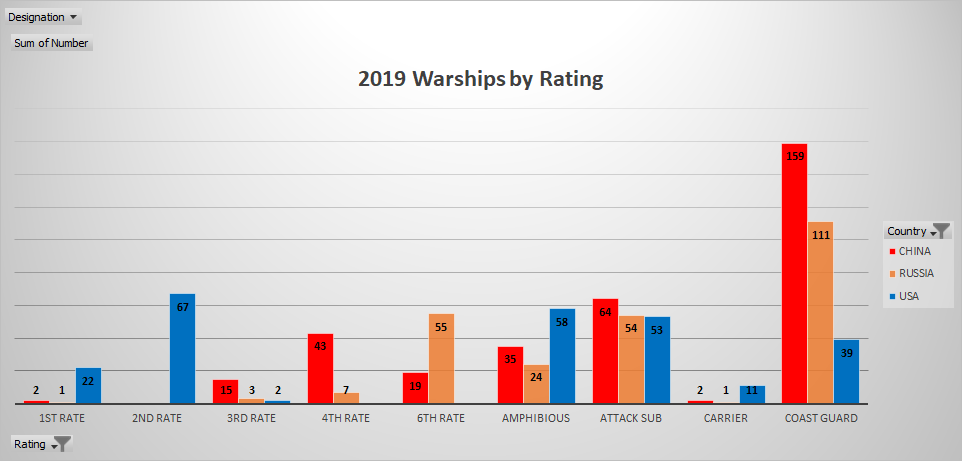
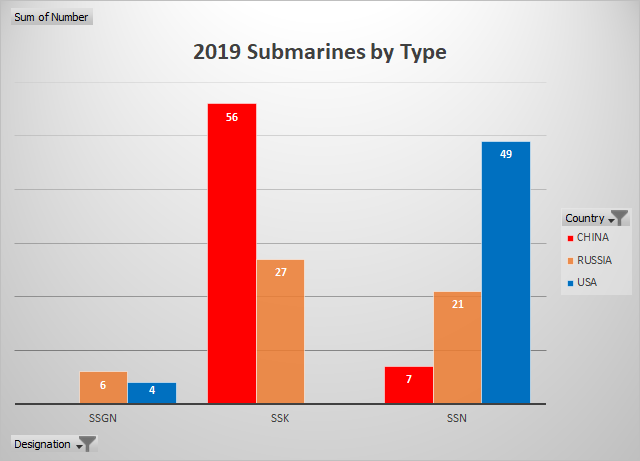
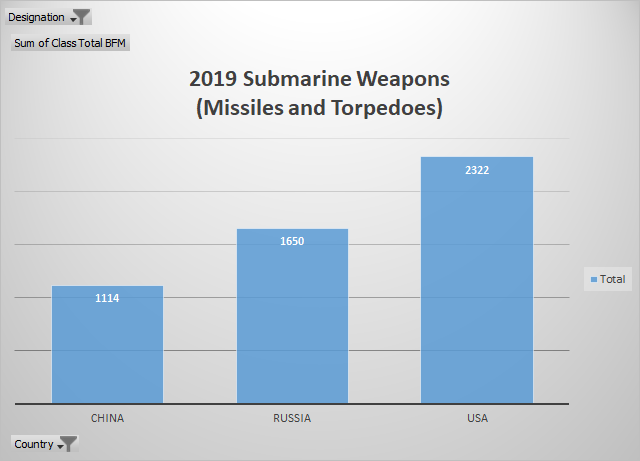


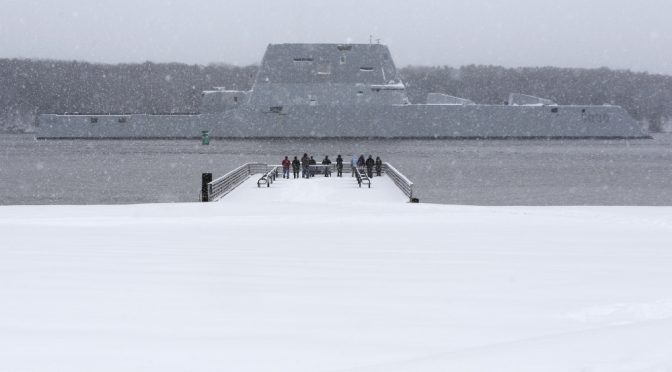

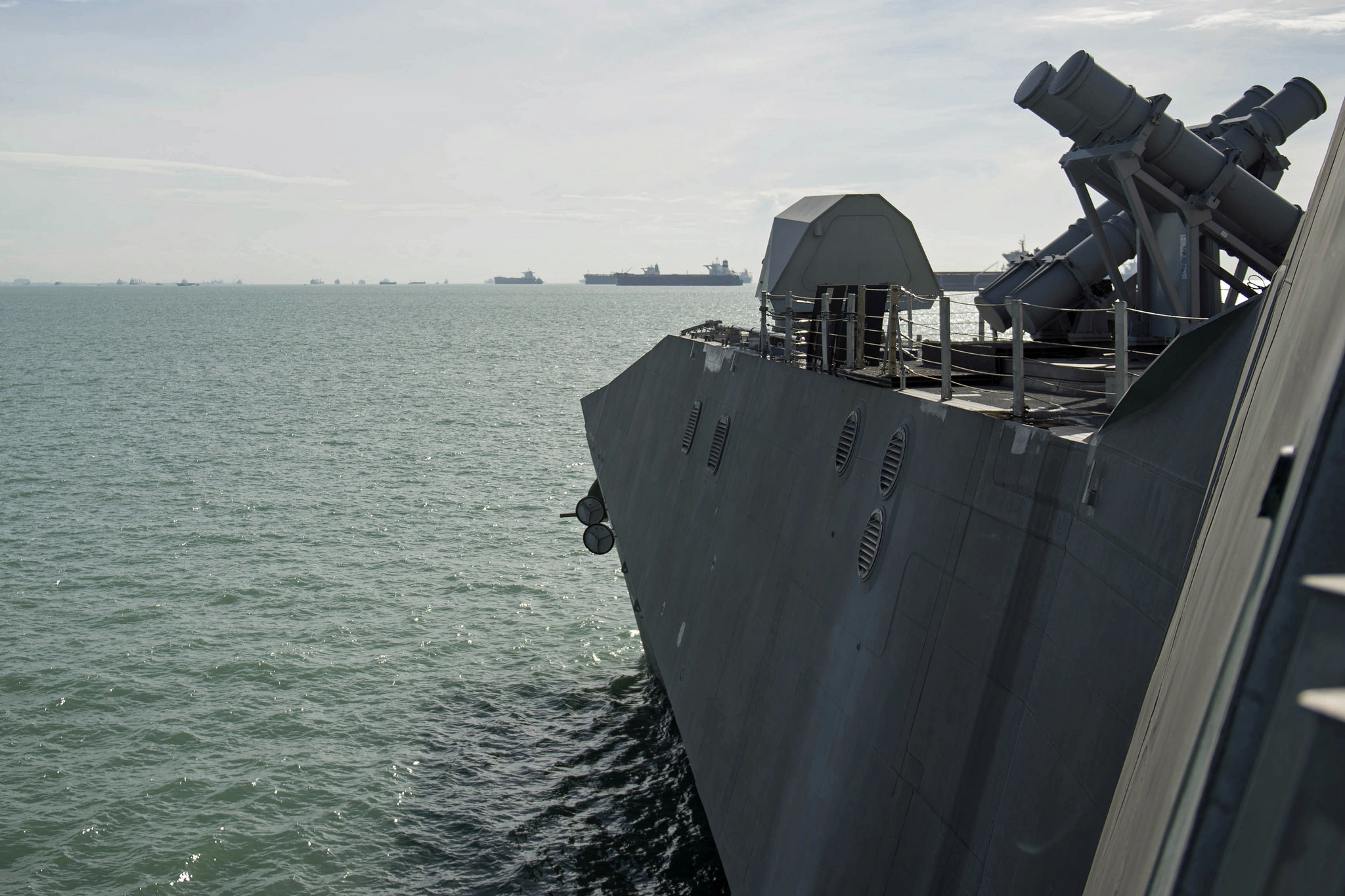
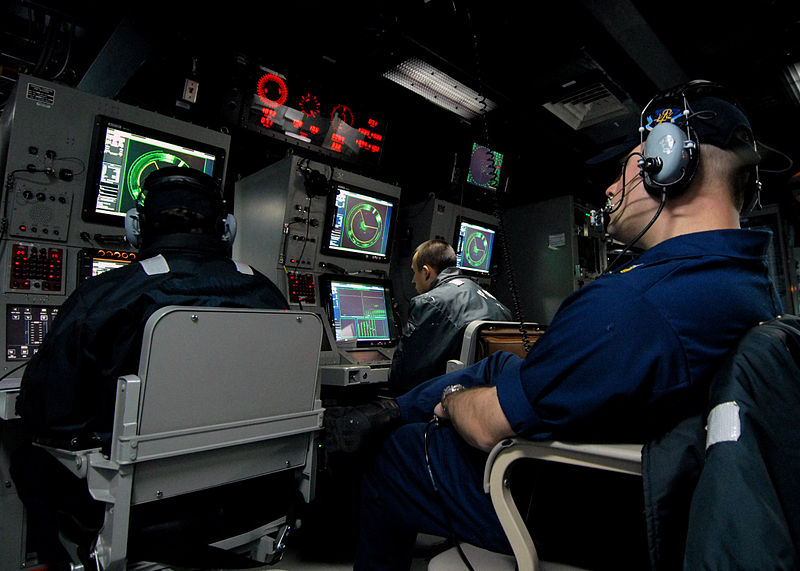

 An academic (Dr. Alexander Clarke), an operator (Cdr Paul
An academic (Dr. Alexander Clarke), an operator (Cdr Paul